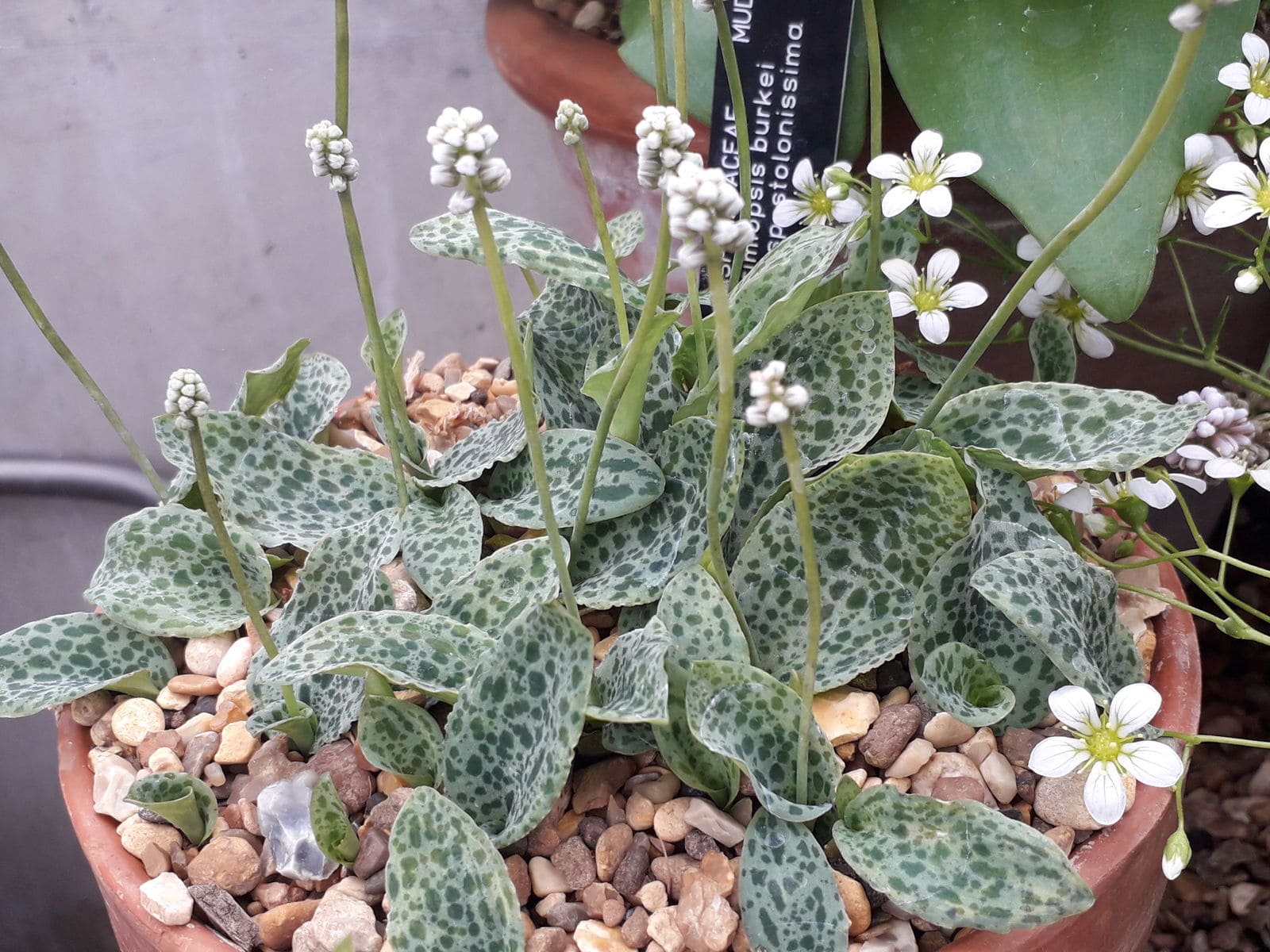In the lush tapestry of botanical wonders, there exists a plant that captivates with its subtle charm and mysterious allure – Drimiopsis. This intriguing genus, belonging to the family Asparagaceae, comprises several species native to the woodlands and grasslands of Africa and Madagascar. Despite its relative obscurity outside horticultural circles, Drimiopsis possesses a unique blend of characteristics that make it a captivating subject of study and a delightful addition to any botanical collection.
Taxonomy and Morphology
Drimiopsis is a genus of perennial herbaceous plants characterized by their bulbous underground stems and rosettes of elongated, strap-like leaves. The foliage of Drimiopsis exhibits various shades of green, often adorned with striking patterns such as spots or stripes, adding to its ornamental appeal. Depending on the species, the leaves may grow erect or sprawl gracefully, creating an enchanting display in both indoor and outdoor settings.
Floral Display
While Drimiopsis is primarily cherished for its foliage, it also produces modest yet charming flowers that emerge on slender stalks above the leaf rosettes. The blossoms, typically white or pale pink in color, possess a delicate beauty and emit a subtle fragrance, attracting pollinators such as bees and butterflies. Although the flowers of Drimiopsis may not rival the flamboyance of some garden favorites, their understated elegance contributes to the overall allure of the plant.
Cultural Significance
In addition to its ornamental value, Drimiopsis holds cultural significance in certain regions where it is native. In traditional African medicine, various parts of the plant are believed to possess medicinal properties and have been used to treat ailments ranging from digestive issues to respiratory disorders. Moreover, Drimiopsis features in folklore and mythology, where it is sometimes associate with symbolism related to rebirth, renewal, and the cyclical nature of life.
Horticultural Considerations
For enthusiasts seeking to cultivate Drimiopsis, the plant offers a relatively low-maintenance option with considerable aesthetic rewards. Drimiopsis species are adaptable to a range of growing conditions, thriving in well-drained soil and partial shade. While they can tolerate periods of drought, consistent watering during the growing season encourages robust growth and flowering. Propagation is typically achieve through division of offsets or by sowing seeds, both of which are straightforward methods accessible to amateur gardeners.
Potential Challenges
Despite its resilience, Drimiopsis may encounter certain challenges, particularly in regions with extreme climates or inadequate drainage. Overwatering can lead to root rot, while prolonged exposure to direct sunlight may cause leaf scorching. Additionally, pests such as aphids or mealybugs may occasionally target Drimiopsis, although infestations are usually manageable with prompt intervention.
Exploring Diversity
Within the genus Drimiopsis, enthusiasts can discover a diverse array of species, each with its own unique characteristics and growing requirements. Some notable examples include Drimiopsis maculata, distinguished by its attractively patterned leaves adorned with irregular spots, and Drimiopsis kirkii, known for its striking foliage and tolerance of lower light levels. Exploring the diversity within the genus allows for the cultivation of intriguing variations and the appreciation of nature’s boundless creativity.
Conclusion
In the realm of ornamental plants, Drimiopsis stands out as a captivating yet understated gem, offering a harmonious blend of beauty, resilience, and cultural significance. Whether adorning a windowsill, brightening a shaded garden corner, or serving as a subject of botanical study, Drimiopsis invites admiration and exploration. As we delve into the world of this enigmatic plant, we unlock not only its aesthetic pleasures but also its rich tapestry of ecological and cultural connections, reminding us of the profound wonders that nature has to offer.





